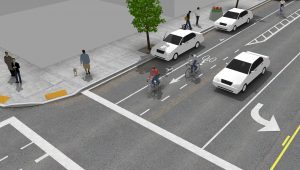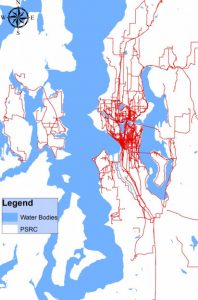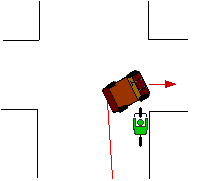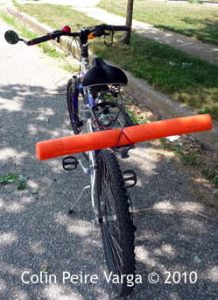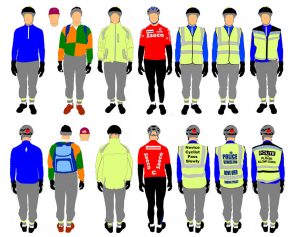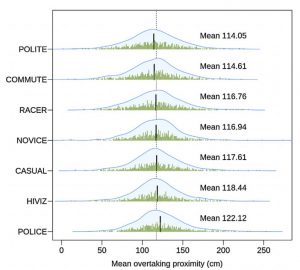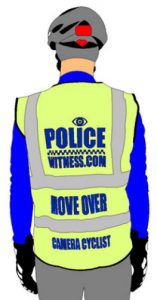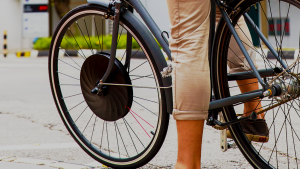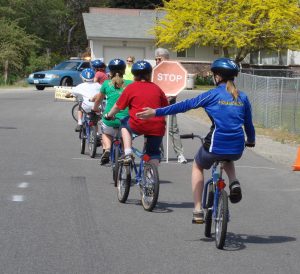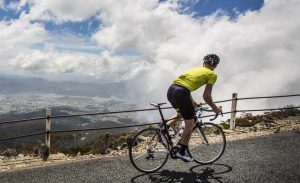Thousands of cyclists die in road accidents every year. Research by Schepers et al showed that the majority of these deaths, in the EU at least, were the result of collisions between vehicles and bicycles, mostly at unsignalised intersections. Prati et al have shown that in such cases the driver’s response plays a critical role in the outcome.
Vehicle manufacturers take either a passive or an active approach to protecting pedestrians and cyclists from collisions. The passive approach involves making the front of the vehicle softer with modified bumpers and external airbags. The active approach involves systems which can sense an impending collision and take evasive action such as automatic braking. There has been a large amount of research and development work in this area with such systems now being assessed within the Euro NCAP standard.
Study Design
This study is concerned with the active avoidance of collisions by car drivers. 44 drivers were instructed to drive through an intersection at speeds of either 30 km/h or 50 km/h. A bicycle then entered the intersection from their right side. The speed of the car was controlled and a light gate was used to trigger the bicycle to enter the intersection at repeatable positions relative to the car. The test track was digitized and 47 drivers completed the same exercises in a driving simulator. In total 947 trials were carried out.
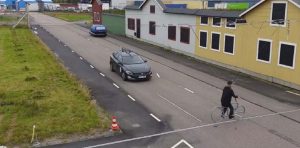
The response of the drivers was recorded in terms of reaction time to take the foot off the gas pedal and to start braking. Some drivers showed proactive behavior releasing the gas pedal as the approached the intersection while others showed reactive behavior by not starting to release the gas pedal until they saw the cyclist. The arrival configuration of the bike and car was used to calculate a risk ratio for each trial. A regression analysis was then used to understand how the factors characterizing the driver’s behavior affected the risk to the cyclist.
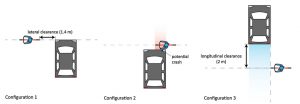
Results
There were some differences in driver behavior in the simulator when compared to the track. The results showed that the most important factor was bicycle visibility. The sooner the bicycles became visible the more effectively the driver braked.
What it means for better bicycles
This study was mostly concerned with informing the design of road infrastructure and active safety systems in cars. That’s great, but what can this study tell us about creating better bicycles?
The biggest danger to cyclists is being hit by a vehicle at an intersection. Making yourself more visible, particularly from the side is the most important thing you can do.
When approaching a badly designed intersection, in which you are hidden by walls or bushes, a system which projects your presence ahead may be valuable. The Blaze Laserlight, therefore, looks like it has some real value, although this study has not directly tested it.
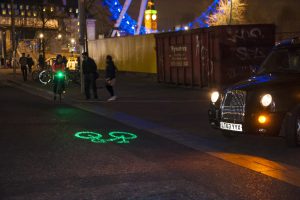
It’s also a good idea to slow down and be defensive of course. But in terms of bike design, side visibility is the takeaway message here.
Read the full paper
You can access the full paper here.
Modelling how drivers respond to a bicyclist crossing their path at an intersection: How do test track and driving simulator compare?
Christian-Nils Boda Marco Dozza Katarina Bohman Prateek Thalya Annika Larsson Nils Lubbe
Accident analysis and prevention. , 2018, Vol.111, p.238-250
